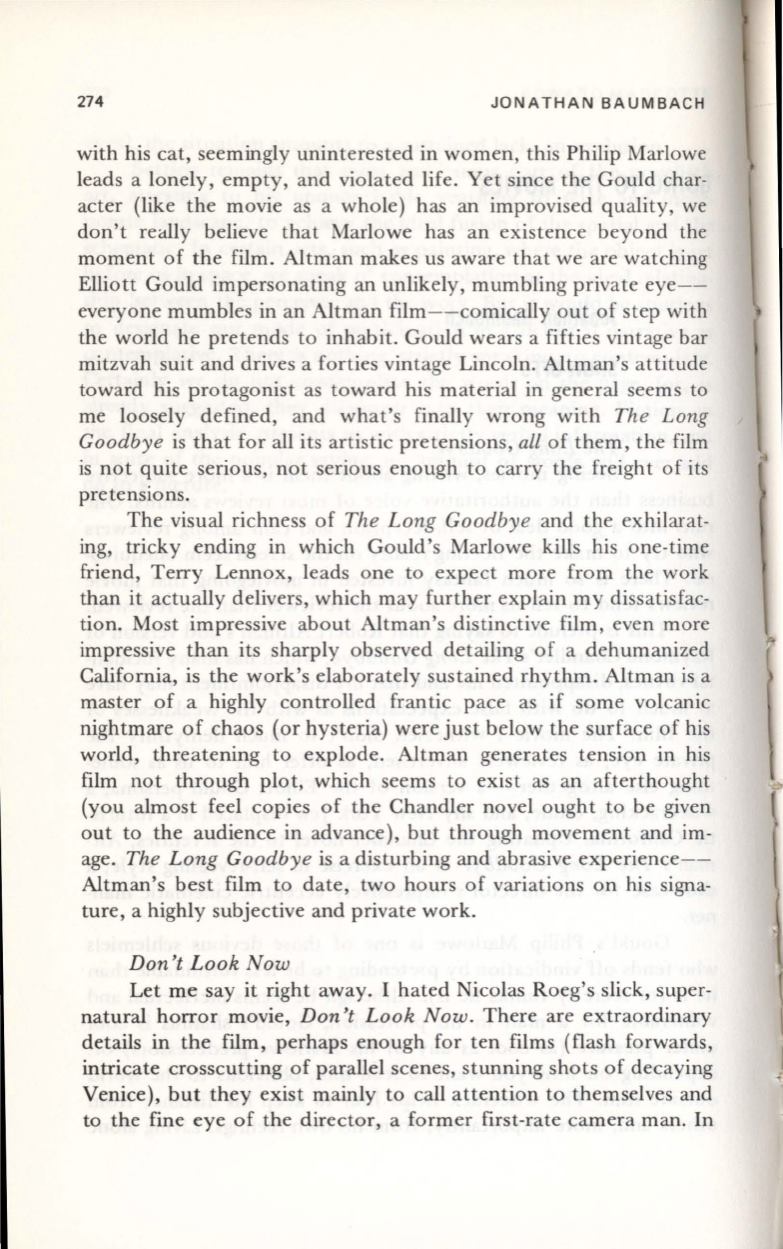
274
JONATHAN BAUMBACH
with his cat, seemingly uninterested in women, this Philip Marlowe
leads a lonely, empty, and violated life. Yet since the Gould char·
acter (like the movie as a whole) has an improvised quality, we
don't really believe that Marlowe has an existence beyond the
moment of the film. Altman makes us aware that we are watching
Elliott Gould impersonating an unlikely, mumbling private eye-–
everyone mumbles in an Altman film--comically out of step with
the world he pretends to inhabit. Gould wears a fifties vintage bar
mitzvah suit and drives a forties vintage Lincoln. Altman's attitude
toward his protagonist as toward his material in general seems to
me loosely defined, and what's finally wrong with
The Long
Goodbye
is that for all its artistic pretensions,
all
of them, the film
is not quite serious, not serious enough to carry the freight of its
pretensions.
The visual richness of
The Long Goodbye
and the exhilarat·
ing, tricky ending in which Gould's Marlowe kills his one·time
friend, Terry Lennox, leads one to expect more from the work
than it actually delivers, which may further explain my dissatisfac·
tion. Most impressive about Altman's distinctive film, even more
impressive than its sharply observed detailing of a dehumanized
California, is the work's elaborately sustained rhythm. Altman is a
master of a highly controlled frantic pace as if some volcanic
nightmare of chaos (or hysteria) were just below the surface of his
world, threatening to explode. Altman generates tension in his
film not through plot, which seems to exist as an afterthought
(you almost feel copies of the Chandler novel ought to be given
out to the audience in advance), but through movement and im·
age.
The Long Goodbye
is a disturbing and abrasive experience-–
Altman's best film to date, two hours of variations on his signa·
ture, a highly subjective and private work.
Don't Look Now
Let me say it right away. I hated Nicolas Roeg's slick, super·
natural horror movie,
Don't Look Now.
There are extraordinary
details in the film, perhaps enough for ten films (flash forwards,
intricate crosscutting of parallel scenes, stunning shots of decaying
Venice), but they exist mainly to call attention to themselves and
to the fine eye of the director, a former first·rate camera man. In


